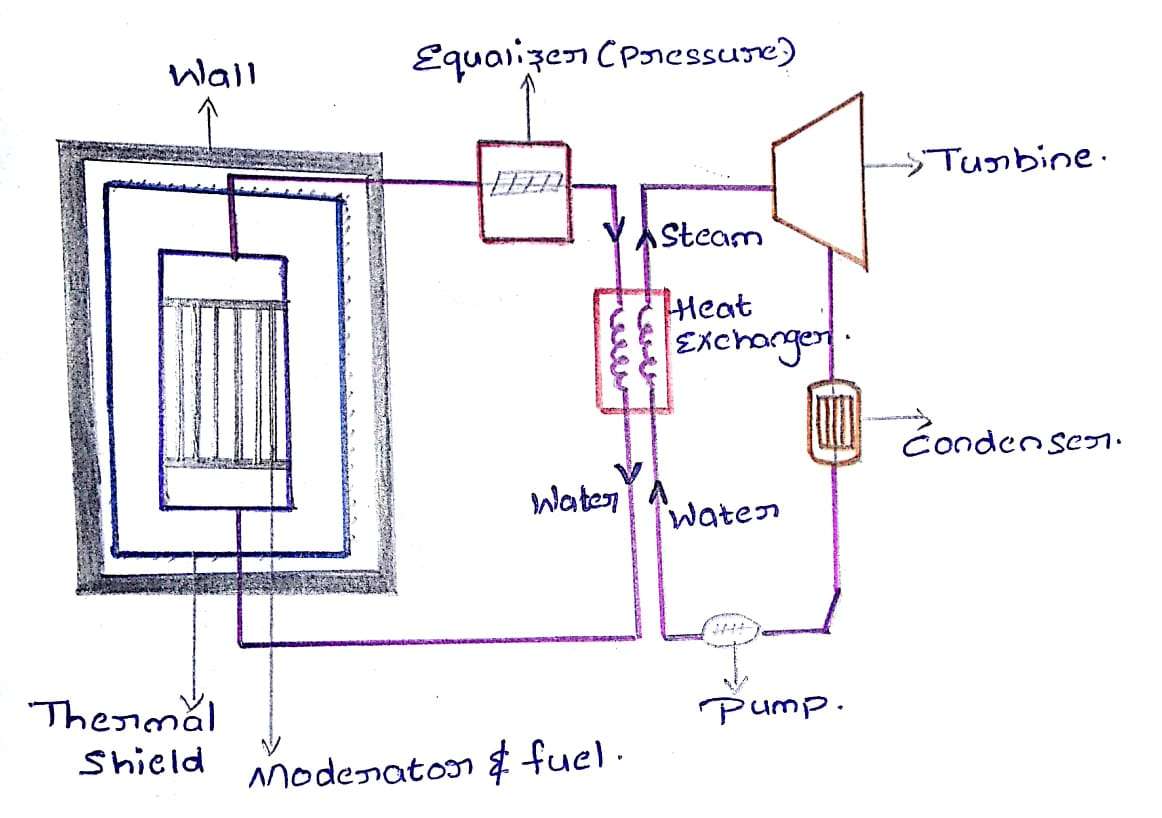Pressurized Water Reactor: Construction, Working, Advantages and Disadvantages:
Pressurized Water Reactor: In this article we will learn about Pressurized Water Reactor. This process is used to develop the steam with the help of moderated reactors, it uses Uranium clad with zirconium alloy as fuel in it. The developed steam is used for the further process.
Construction of Pressurized Water Reactor:
- Reactors
- Heat ex-changer
- Turbine
- Circulating pump
Reactors:
This is used to generate heat init and this used to heat the water.
Heat ex-changer:
Heat ex-changer helps to transfer the heat from water to generate the steam.
Turbine:
Turbines convert the steam energy into kinetic energy and further supplied to the generator to produce power.
Circulating pump:
This used to supply the water from heat ex-changer to the reactor by maintaining pressure up to 120 bar.
Working:
Water gets heated by the help of energy created through fission reaction in the reactor, the heated water is supplied through the heat ex-changer to heat the water and produce steam, which is entering from another side of heat exchange, by this heat, is supplied to develop steam and used for the further process. water inside the heat ex-changer used to recirculate with the help of a pump and to maintain pressure up to 120 bar, water which is recirculating contains radioactive material which is not safe who are working near to it, from this it uses the concrete wall to protect the operators.
Advantages:
- Water used in it is highly available in nature.
- Construction is easy.
- Investment is low.
- Steam produced by it has no effects.
Disadvantages:
- Using Uranium enriched increases the fuel cost.
- It produces radioactive gases which are harmful.
- Final efficiency obtained is less.
- It may cause corrosion effects.
Please Subscribe! and Don’t forget to Follow us on Facebook, Twitter, Linkedin, Instagram and Google Plus.



